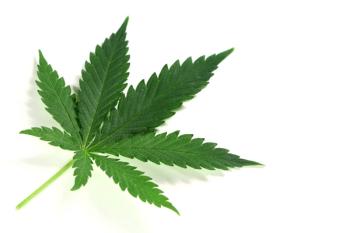
New Research Shows that Cannabis Trichomes Trigger Positive Results on Rapid Yeast and Mold Plates
Kevin McKernan, Chief Scientific Officer and Founder of Medicinal Genomics, shares some insight behind his recently published paper related to cannabis trichomes and positive results on rapid yeast and mold plates.
In a recent pre-print article by Kevin McKernan and Yvonne Helbert of Medicinal Genomics (1), they present latest findings from their laboratories demonstrating that certain trichome-rich strains can be mistaken for pathogen-rich samples.
Kevin McKernan, Chief Scientific Officer and Founder of Medicinal Genomics, recently explained to Cannabis Science and Technology (CST) that his team is frequently being asked to have more modern techniques like quantitative polymerase chain reaction (qPCR) emulate the legacy technologies of plating. “Many regulators write laws that speak to colony forming units (CFU)/g, but what is a colony forming unit? It varies depending on what temperature you use. It varies based on which carbon sources you have on your plates. It is now known to also vary if you have trichomes in your sample. But these metrics are poor correlates for patient risk,” said McKernan.
In the abstract of their article, McKernan and Helbert explained their process in conducting the study (1): “We plated cannabis trichomes on multiple different plating media and observed elevated colony counts on 3M Rapid Yeast and Mold Petrifilm plates. Further investigation revealed cannabis trichomes induce a blue color change with the phosphatase-based indicator dye used on 3M RYM Petrifilms. We confirmed these events with microscopy and note the color change doesn’t dilate in diameter as quickly as yeast and molds.”
McKernan also shared with CST that in this study they simply took kief from a kief collector and plated them on various plating technologies and noticed the plating system that used phosphatase reactions as its read-out chemistry also painted trichomes as CFUs.
“This data implies that 3M Petrifilms may generate false positives compared to more traditional plating methods, if used for less than 48 hours with trichome rich cannabis flowers. Longer incubation times may be necessary to differentiate trichome derived false positives from true yeast and molds,” they further explained (1).
“If you are breeding for trichome rich plants, contact your testing to lab to ask if they are using these plates. It may explain elevated TYM [total yeast and mold] counts and product being failed due to false positives related to the non-specific phosphatase reaction these plates rely on,” said McKernan. “Few foods are bred for high trichome density but certain spices in the food industry are reported to create similar false positives. Trichome rich cannabis will be falsely penalized at testing labs that use these plates.”
The paper concludes that microbial testing methods that falsely elevate yeast and mold counts will improperly select against trichome rich cultivars. The authors emphasize that care should be taken to understand what triggers each microbial test and what percent of yeast and molds can grow on these media (1). McKernan also added that people should “use plates that don’t rely on this phosphatase indicator reaction or use qPCR where trichomes are purified away before quantification of TYM DNA.”
Reference
Newsletter
Unlock the latest breakthroughs in cannabis science—subscribe now to get expert insights, research, and industry updates delivered to your inbox.




